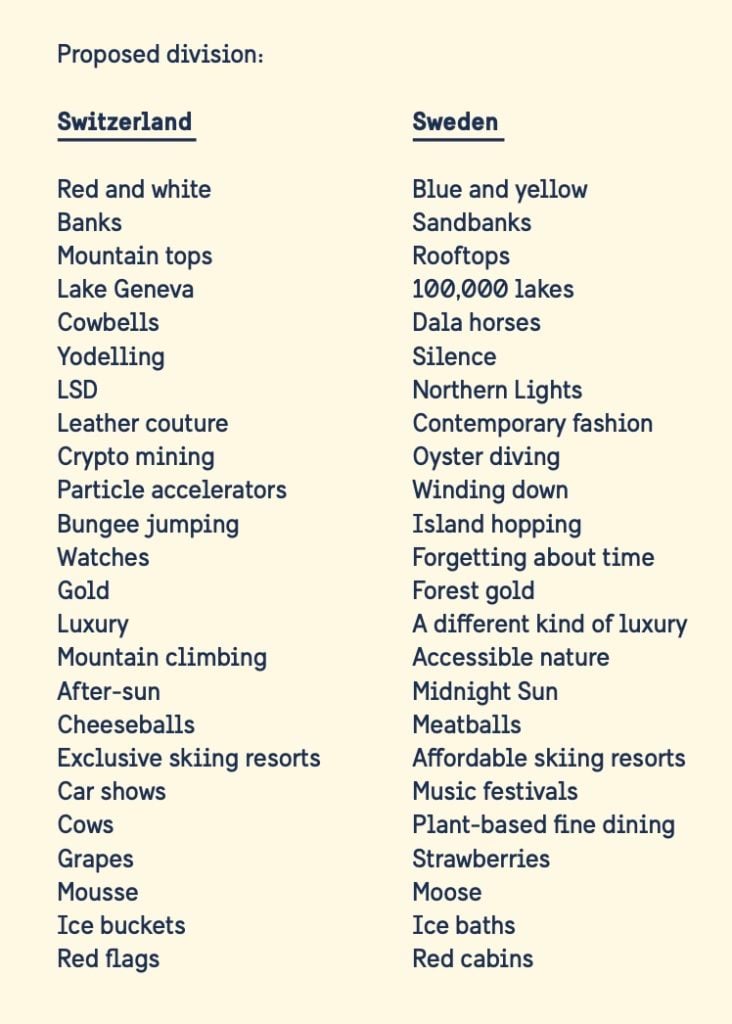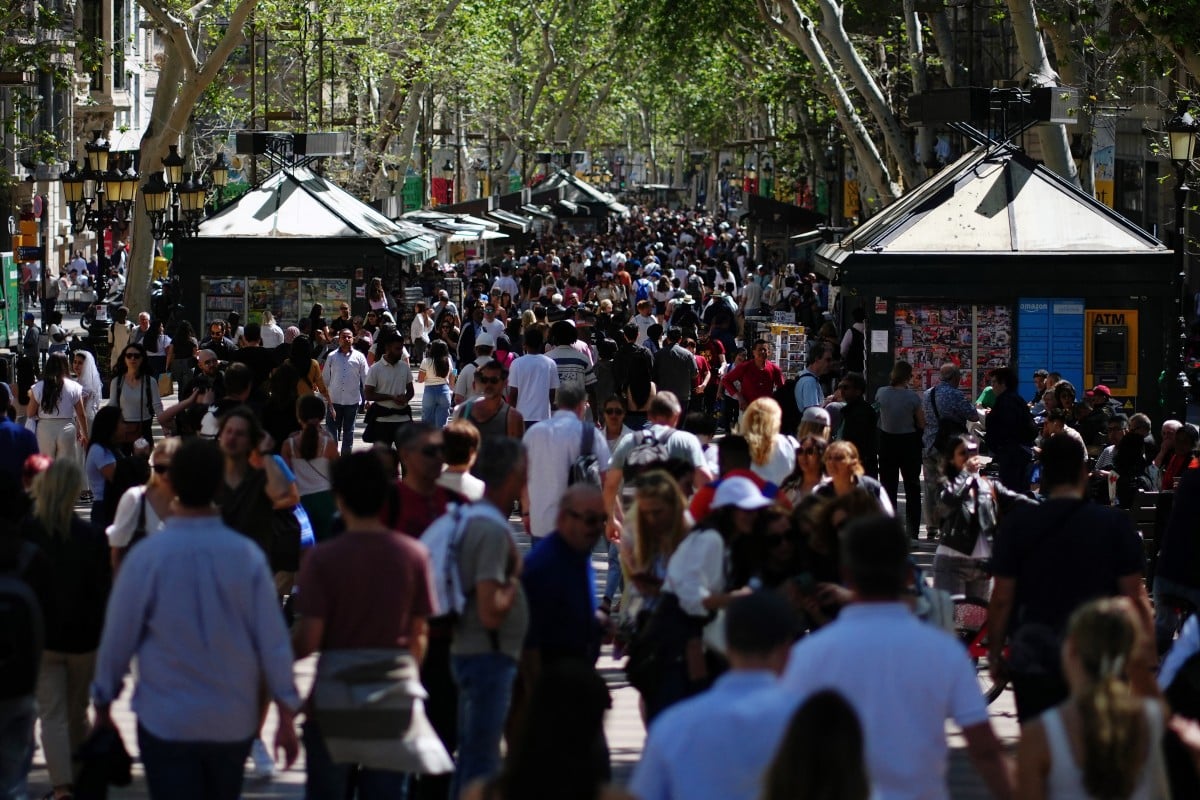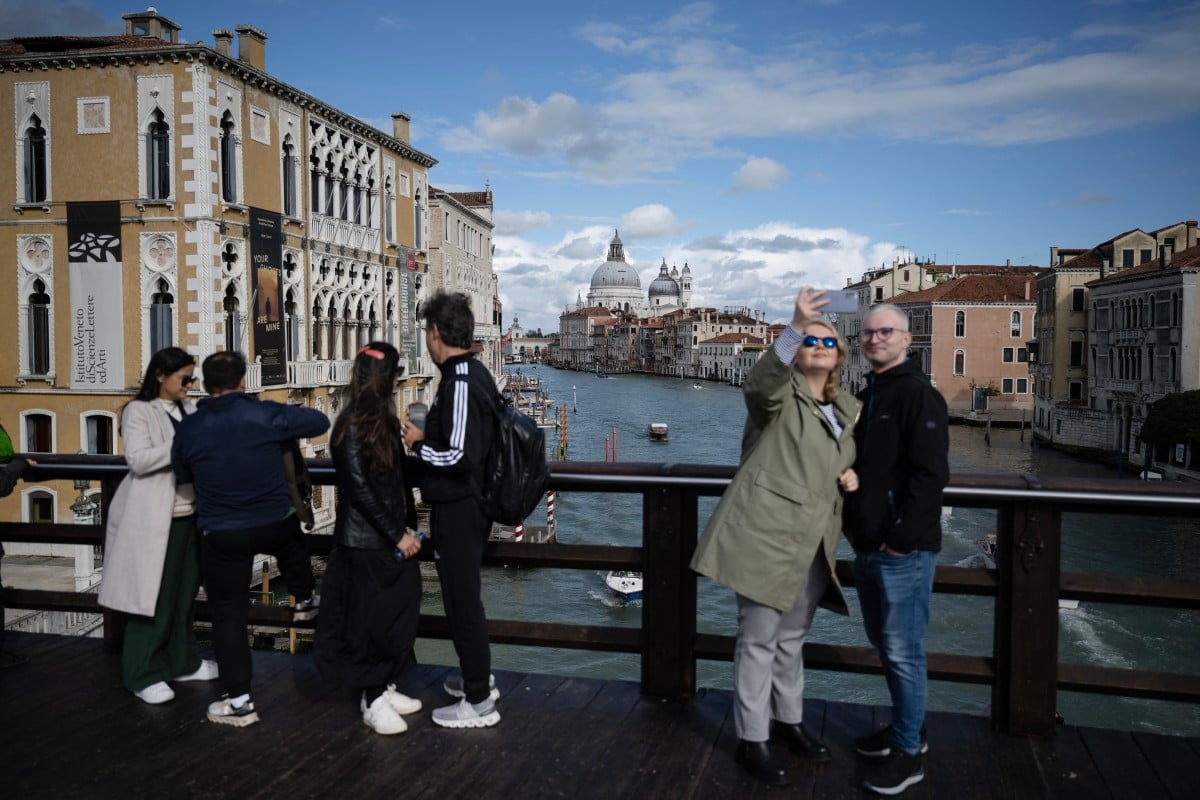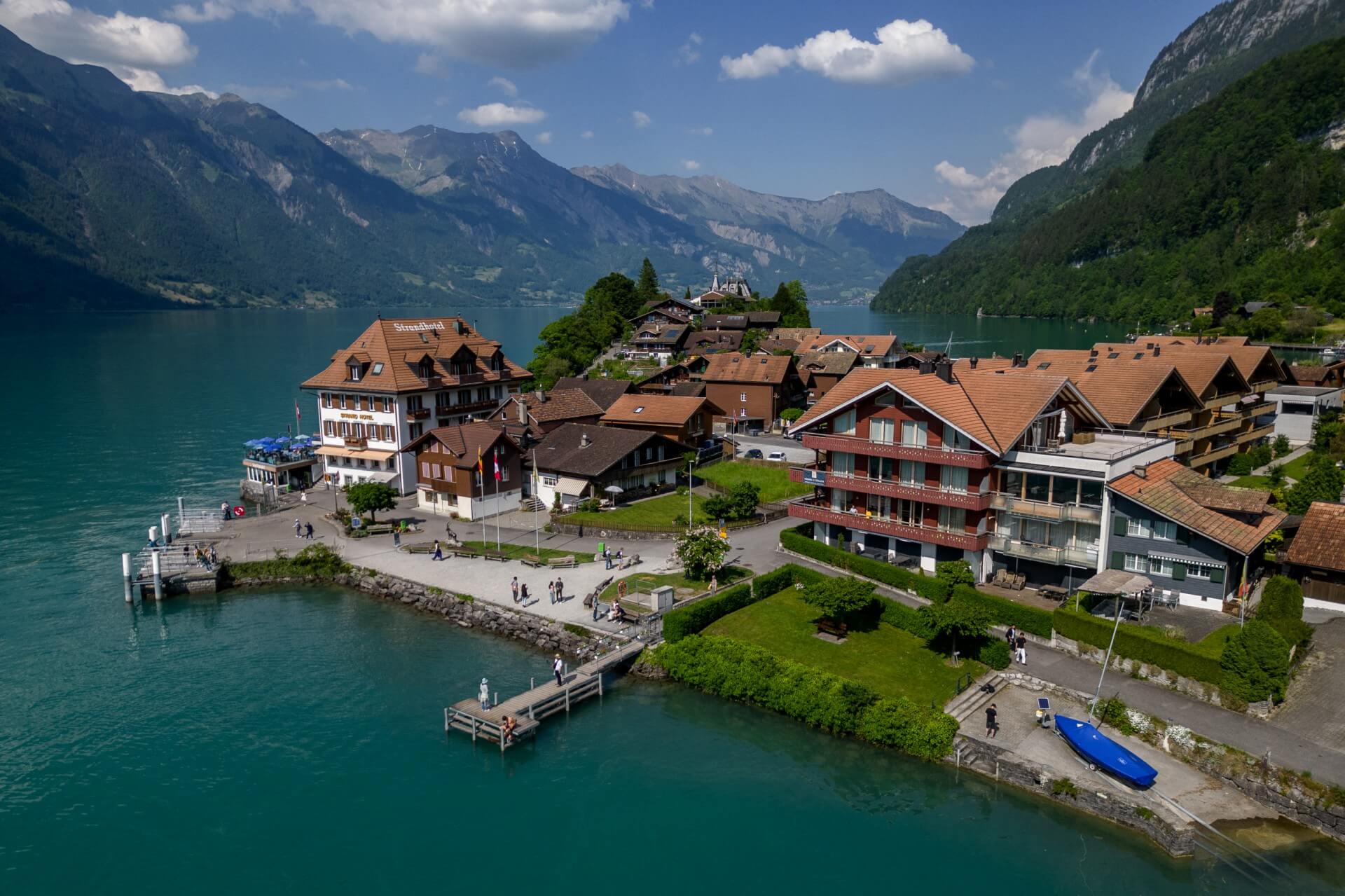Sweden and Switzerland are often mixed up, whether that be by tourists, protesters burning the wrong flag, Wall Street celebrating the listing of Spotify on the New York Stock Exchange, or even US President Joe Biden mistakenly welcoming Switzerland into Nato.
Sure, they’re both mountainous European countries beginning with “Sw” with a cross on their flag, but the similarities end there.
“Leaders and citizens of Switzerland, we’re contacting you regarding our mutual problem,” a Swedish official, played by comedian Emma Peters, in Visit Sweden’s new ad states, while flanked by Swedish (not Swiss) flags.
“It’s time we make the distinction between our two nations as clear as day, by deciding who talks about what.”
In the video, Visit Sweden proposes that each country sticks to an agreed list of topics. Switzerland can have red flags, while Sweden gets red cabins. Switzerland can have LSD (it was invented there), while Sweden gets “a different kind of surreal experience”: the Northern Lights.
Yodelling, gold and banks go to Switzerland, while Sweden in return is allocated silence (or rather “a lack of yodelling”), chanterelles (also known as skogens guld or “forest gold”), and sandbanks (Switzerland is landlocked, while Sweden has over 48,000 kilometres of coastline and over 100,000 lakes).
“As long as both tourism destinations stick to this division in all communication with the outside world, the confusion should come to an end,” the agreement, addressed to Swiss officials, reads.
So what happens if Switzerland doesn’t sign the agreement?
“We understand,” Visit Sweden writes. “We are both used to being neutral.”
Austria and Australia have yet to comment on the new campaign.







 Please whitelist us to continue reading.
Please whitelist us to continue reading.
Member comments